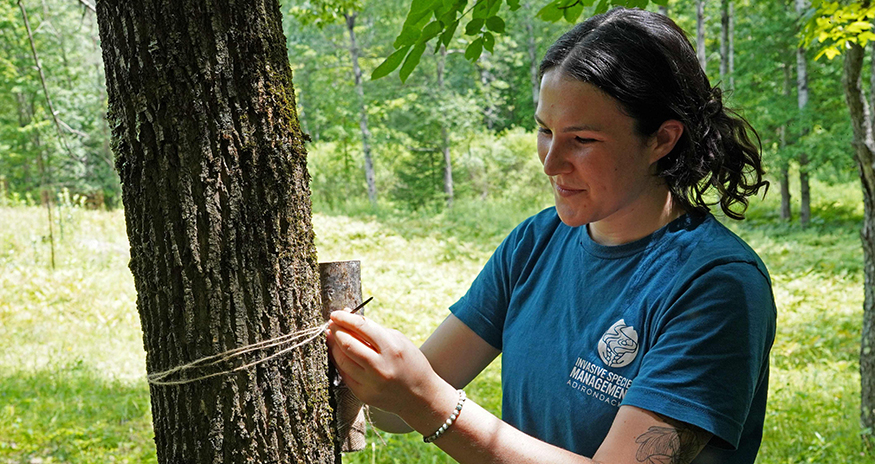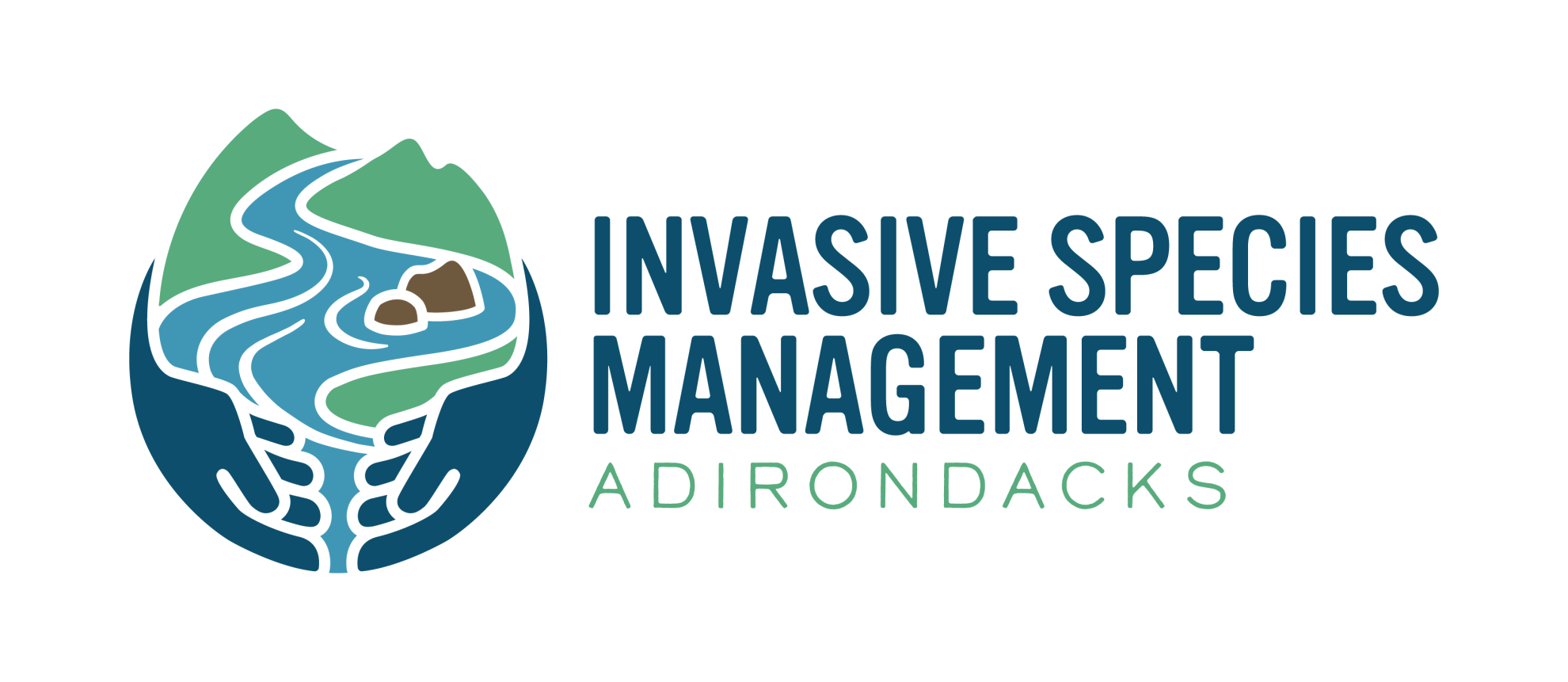APIPP Releases Biocontrol Insects to Manage Emerald Ash Borer

APIPP Releases Biocontrol Insects to Manage Emerald Ash Borer
KEENE VALLEY – The Adirondack Park Invasive Plant Program has added a new biological control option to its toolbox for managing invasive forest pests.
Biocontrols, as they are often called, are specialized organisms that are introduced for the purpose of preying on a specific invasive species, with the goal of reducing the invasive species’ population over time.
For more than 10 years, APIPP has released biocontrol beetles to manage purple loosestrife, an invasive flowering plant that can quickly overtake wetlands and other areas. The biocontrol beetle, in combination with chemical and mechanical management of this plant, has significantly reduced purple loosestrife populations along Adirondack roadways and waterways.
APIPP also recently helped staff from the New York State Hemlock Initiative and state Department of Environmental Conservation release biocontrols for hemlock woolly adelgid, an invasive insect that kills hemlock trees.
To help reduce the threat of emerald ash border (EAB) to Adirondack forests, this summer APIPP staff released three stingless wasp species on a central Adirondack property infested with EAB.
EAB is an invasive insect that relies on ash trees to complete its life cycle. The larvae feed on bark tissue, eventually girdling and killing the tree. The forest pest has killed tens of millions of trees in the United States and its presence has been confirmed in several areas of the Adirondack region.
When an Adirondack landowner contacted APIPP terrestrial invasive species project coordinator Becca Bernacki about a possible EAB infestation on his property, Bernacki was quick to investigate the report.
“There are native insects that leave signs that could be mistaken for emerald ash borer, which is why we always tell people to report any potential invasive species that they find, even if they’re unsure they’ve identified it correctly,” Bernacki said. “In this case the landowner correctly identified EAB, so the next step was to talk about options for managing it.”
Those discussions led to APIPP applying to the U.S. Department of Agriculture’s Animal and Plant Health Inspection Service (APHIS) for selection as an EAB biocontrol site. APHIS oversees a national program for the rearing and release of three stingless wasp species, Spathius galinae, Tetrastichus planipennisi, and Oobius agrili, which are known predators of EAB beetles in their native range.
The number of available wasps is limited, and the site-selection process for the APHIS program is competitive, as EAB has been confirmed in 35 states and the District of Columbia. APIPP was successful in having an Adirondack site selected the second time it applied.
Bernacki said the wasps are harmless to people and the environment, but they are highly effective at killing emerald ash borer larvae and eggs. She said it could take several years for the biocontrols to reduce the EAB populations.
“If successful, the result of the biocontrol release will be twofold,” Bernacki said. “The wasps will not only protect as many ash trees as possible on his land, they will also keep EAB from spreading further into the Adirondacks.”
The parasitoids APIPP releases were produced and supplied from the APHIS, Plant Protection and Quarantine (PPQ) EAB Parasitoid Rearing Facility in Brighton, MI. For more parasitoid information please call APHIS at 866-322-4512.
APIPP’s mission is to work in partnership to minimize the impact of invasive species on the Adirondack region’s communities, lands, and waters. Learn more at www.adkinvasives.com.
###
The Adirondack Park Invasive Plant Program (APIPP) serves as the Adirondack Partnership for Regional Invasive Species Management (PRISM), one of eight partnerships across New York. APIPP is hosted by The Adirondack Chapter of The Nature Conservancy and receives financial support from the Environmental Protection Fund administered by New York State Department of Environmental Conservation.

